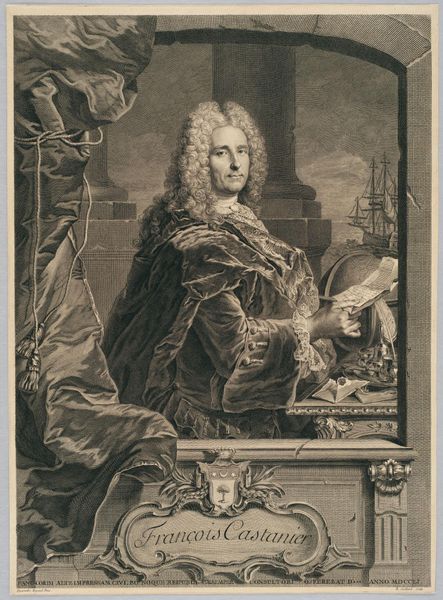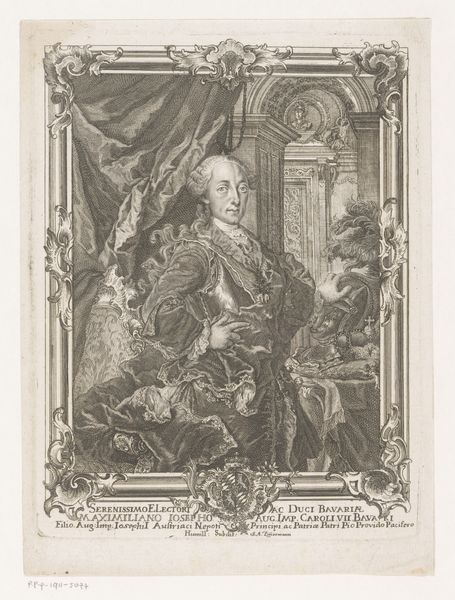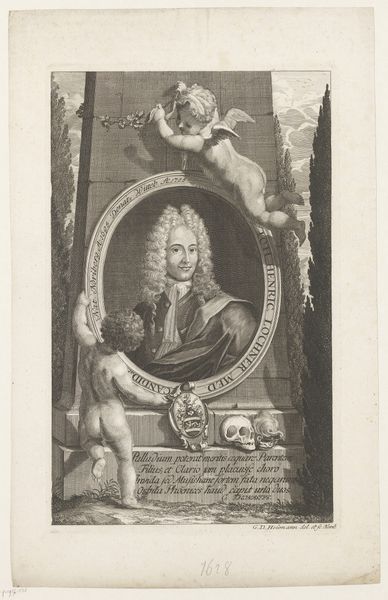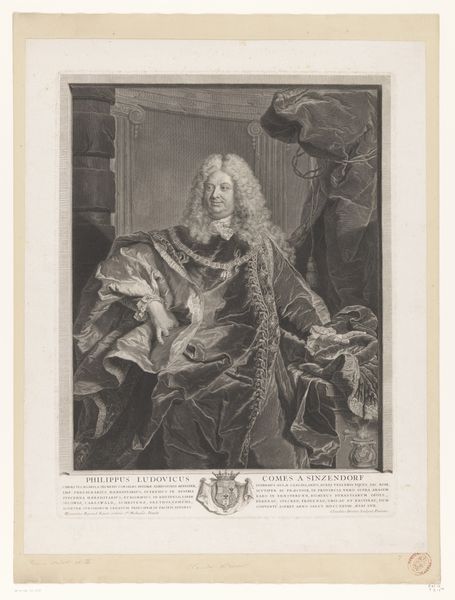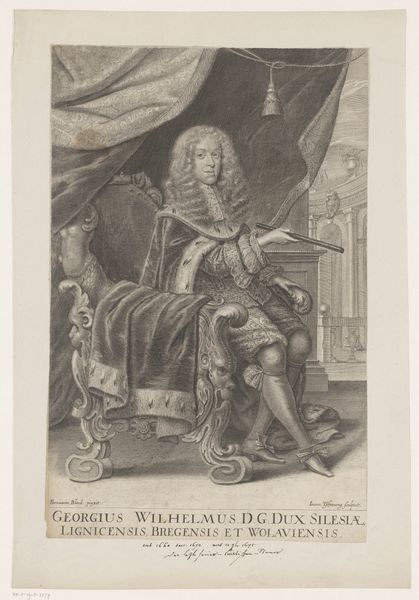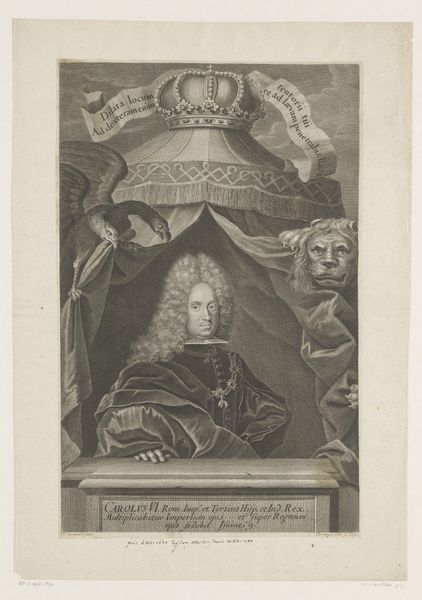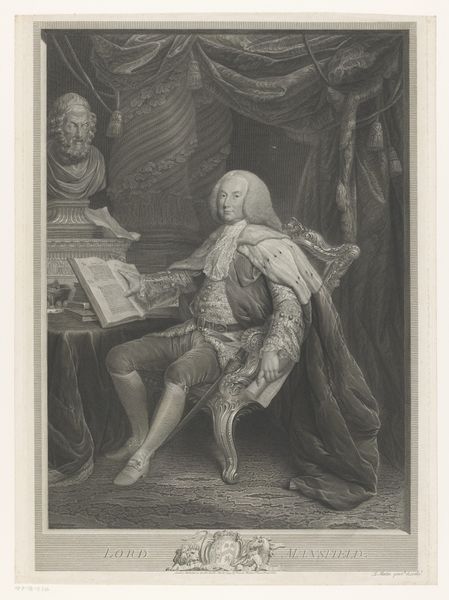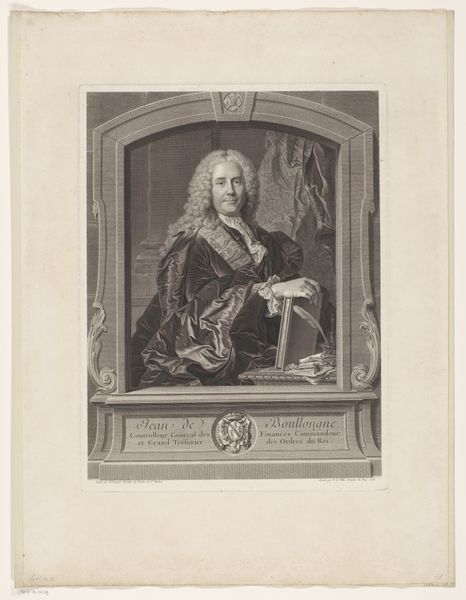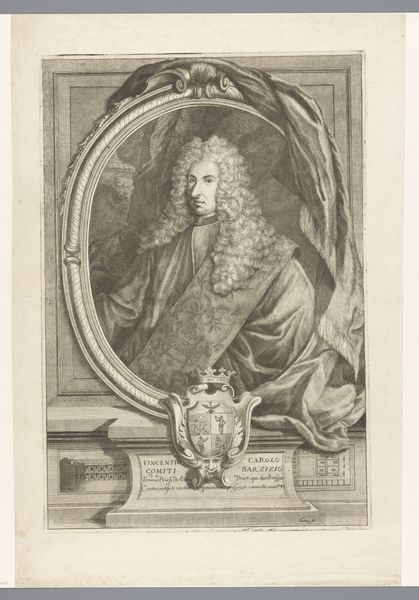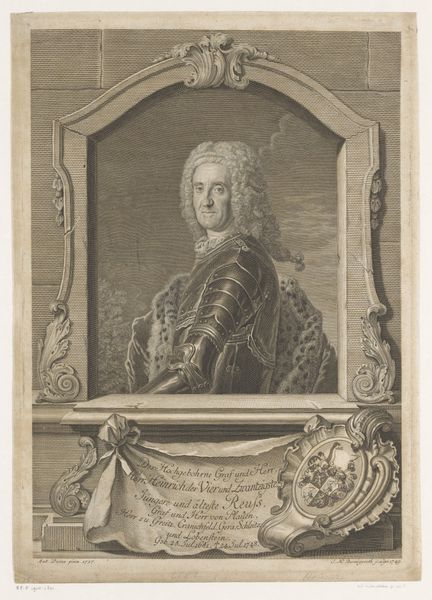
print, engraving
#
portrait
#
baroque
# print
#
old engraving style
#
historical photography
#
genre-painting
#
history-painting
#
academic-art
#
engraving
#
realism
Dimensions: height 470 mm, width 342 mm
Copyright: Rijks Museum: Open Domain
Editor: This is "Portret van François Castanier," an engraving from 1751 by René Gaillard. The detail is really impressive. It's such a formal depiction of a man from the Baroque period, with that massive wig. How do you interpret this work through a formal lens? Curator: The meticulous technique employed in this engraving is, indeed, noteworthy. Consider the distribution of light and shadow. Gaillard orchestrates tonal variations with impressive control. Note the contrast between the intricately detailed face of Castanier, with each strand of his wig rendered with precision, and the background. How do those contrasting areas create depth? Editor: I see how the lightness around the face pulls you in, but the heavy curtain on the left, darker and with less detail, sort of pushes back. Curator: Precisely. And what of the textures? Examine the velvety folds of his robe against the smooth surface of the table, the rougher stone texture of the column. Gaillard has given careful consideration to differentiating surface qualities. We see both depth and form. Does this emphasis on contrasting elements offer any insight into its style? Editor: I guess so, since this portrait is full of these visual tensions that define baroque—ornate details alongside simpler forms, dramatic light with deep shadows. I hadn’t noticed how actively the textures worked until you pointed them out. Curator: That is exactly right. It all contributes to a visual dynamism typical of the Baroque. Formal analysis illuminates those internal relationships that construct the meaning. Editor: I see how focusing on the technique helps unpack its historical art style, but it also shows us how the artist added specific features to bring us in. It definitely inspires me to analyze every detail closely.
Comments
No comments
Be the first to comment and join the conversation on the ultimate creative platform.

